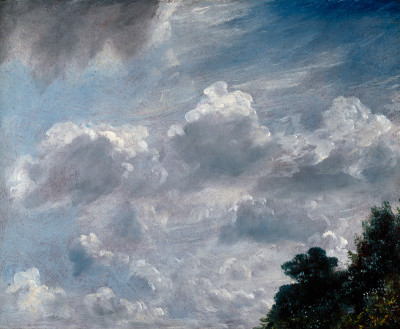Consequences of war
Consequences of war
The RA during the First World War
By Mark Pomeroy
Published 7 August 2014
The First World War took a heavy toll on the Royal Academy’s artists, staff and students - and left indelible scars on our building.
-
Throughout the week of 4 August 2014, we’re publishing a series of blogs telling the story of the Royal Academy of Arts during the First World War. Read other blogs in the series here.
One month after the arrival of the Dazzle project a bomb, dropped by a Zeppelin, plunged through the rooflight of Gallery IX and exploded on hitting the floor. Luckily the impact occurred at the apex of the stonevaulting of the schools corridor (the RA Schools are located underneath the Main Galleries) and structural damage was minor, although shrapnel buried itself six inches into the stone flagging and several casts were damaged. Gallery IX itself was wrecked, as the photograph above shows, and still bears the scars around the doorway into the Lecture Room.
-

A small plaque in the doorframe between Gallery IX and the Lecture Room explains the shrapnel damage
-
Members of staff enlisted in the forces soon after the war began. In November 1914 Ernest E.V. Wright, the sub-Librarian, joined the Public Schools Battalion, formed specifically for well-educated men. It was not long before the battalion was absorbed into the regular army and Wright ended up serving at Gallipoli and the Somme, only to return and pick up his Academy career after the war.
The first known casualty with a connection to the Academy occurred in January 1915. Second Lieut. Francis E.F. Crisp was a painter and had won the gold medal and travelling scholarship while a student at the Academy in 1907. In 1912 Crisp volunteered for the 28th Battalion of the London Regiment, more commonly known as the Artists Rifles, and on the outbreak of war was almost immediately sent to the front. Within ten weeks he was dead, the first of his unit killed since the 1914 Christmas truce.
Crisp is shown in the photograph of RA Schools students below, taken in 1906 – he is the tall man in the back row with his hands clasped in front. The two other young men in the back row were also killed in action in the First World War. Full caption details are on the RA Collection website.
-

Photographed c.1906
Students of the RA Schools in 1906. Three of the young men in the back row were killed in action in the First World War. Full caption details on the RA Collection website
Royal Academy of Arts
-
In February 1916, the Keeper (the head of the RA Schools) reported that 146 current and ex-students were on active service. Of these, 35 were killed – nearly 25%. Their memorial is in the east side of the portico of Burlington House, while the west side holds a memorial to the Artists Rifles.
-

First World War memorials in the portico of Burlington House.
-
The first name listed on the memorial to former students is Nina Baird, who died of typhoid contracted when she was working with the Red Cross in north Africa.
-

Nina Baird photographed in north Africa during the First World War, c1915-1916
-
Since its formation in 1859, the Artists Rifles regiment has included 50 Royal Academicians and five Presidents of the RA. In this BBC London video, Bob and Roberta Smith RA takes a look at the role of the Artists Rifles in the First World War. An exhibition about the Artists Rifles is at the Willis Museum, Basingstoke until 27 September 2014.
Mark Pomeroy is the Royal Academy’s Archivist.







